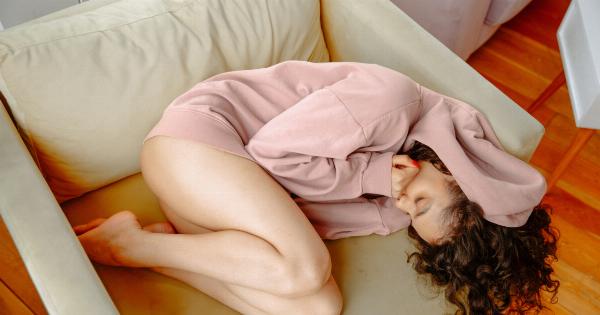Adolescent periodic pain is a common occurrence among female teenagers. In fact, according to a study by the American College of Obstetricians and Gynecologists, up to 95% of teenage girls experience menstrual cramps at some point in their adolescence.
While this is a normal part of the menstrual cycle, it is important to recognize that there may be hidden dangers associated with this type of pain. In this article, we will explore the potential dangers and how teenage girls can manage their symptoms.
What is Adolescent Periodic Pain?
Adolescent periodic pain refers to the pain that teenage girls experience before or during their menstrual cycle. This pain is typically felt in the lower abdomen, but can also be felt in the lower back, thighs, or hips.
It is caused by contractions in the uterus as it prepares to shed its lining. These contractions are triggered by certain hormones, including prostaglandins, which are released by the body.
What are the Dangers of Adolescent Periodic Pain?
While adolescent periodic pain is not usually a cause for concern, there are some potential dangers that teenage girls should be aware of. These dangers include:.
1. Missed School or Work
Severe menstrual cramps can make it difficult for teenage girls to attend school or work. In some cases, the pain may be so severe that it interferes with daily activities or causes the girl to miss an entire day of school or work.
This can lead to missed assignments or exams, which can impact academic performance or job performance.
2. Depression and Anxiety
Adolescent periodic pain can cause emotional distress, especially if the pain is severe. Some girls may experience depression or anxiety as a result of their pain, which can impact their overall wellbeing and quality of life.
3. Endometriosis
Endometriosis is a condition where tissue similar to the lining of the uterus grows outside of the uterus, causing pain and discomfort. Adolescent periodic pain can be a symptom of endometriosis, which can go undiagnosed for years.
If left untreated, endometriosis can lead to infertility in some women.
4. Dysmenorrhea
Dysmenorrhea is a medical term used to describe painful menstrual periods. Adolescent periodic pain is a type of dysmenorrhea, which can be caused by a variety of factors including endometriosis, uterine fibroids, or pelvic inflammatory disease.
If the underlying cause of dysmenorrhea is not treated, it can lead to chronic pain or other health complications.
How Can Teenage Girls Manage Their Symptoms?
Fortunately, there are ways that teenage girls can manage their symptoms and reduce the potential dangers associated with adolescent periodic pain. Here are some strategies to consider:.
1. Over-the-Counter Pain Relievers
Over-the-counter pain relievers, such as ibuprofen or naproxen, can help to reduce menstrual cramps and other types of menstrual pain.
These medications work by blocking the production of prostaglandins, the hormone that causes the pain and inflammation.
2. Heat Therapy
Applying heat to the lower abdomen or lower back can also help to reduce menstrual pain. This can be done with a hot water bottle, a heating pad, or a warm bath.
3. Exercise
Exercise can help to reduce menstrual pain and other premenstrual symptoms. Activities such as walking, jogging, or yoga can be particularly beneficial.
4. Dietary Changes
Some dietary changes may also help to reduce menstrual pain. For example, reducing caffeine and sugar intake may help to regulate hormones and reduce inflammation.
5. Medical Intervention
If menstrual pain is severe or if it is interfering with daily activities, medical intervention may be necessary. Hormonal birth control, pain medications, or surgery may be recommended by a healthcare professional.
Conclusion
Adolescent periodic pain is a common occurrence among teenage girls, but it is important to recognize the potential dangers associated with this type of pain.
By understanding these dangers and learning how to manage the symptoms, teenage girls can reduce the impact that menstrual pain has on their daily lives.






























